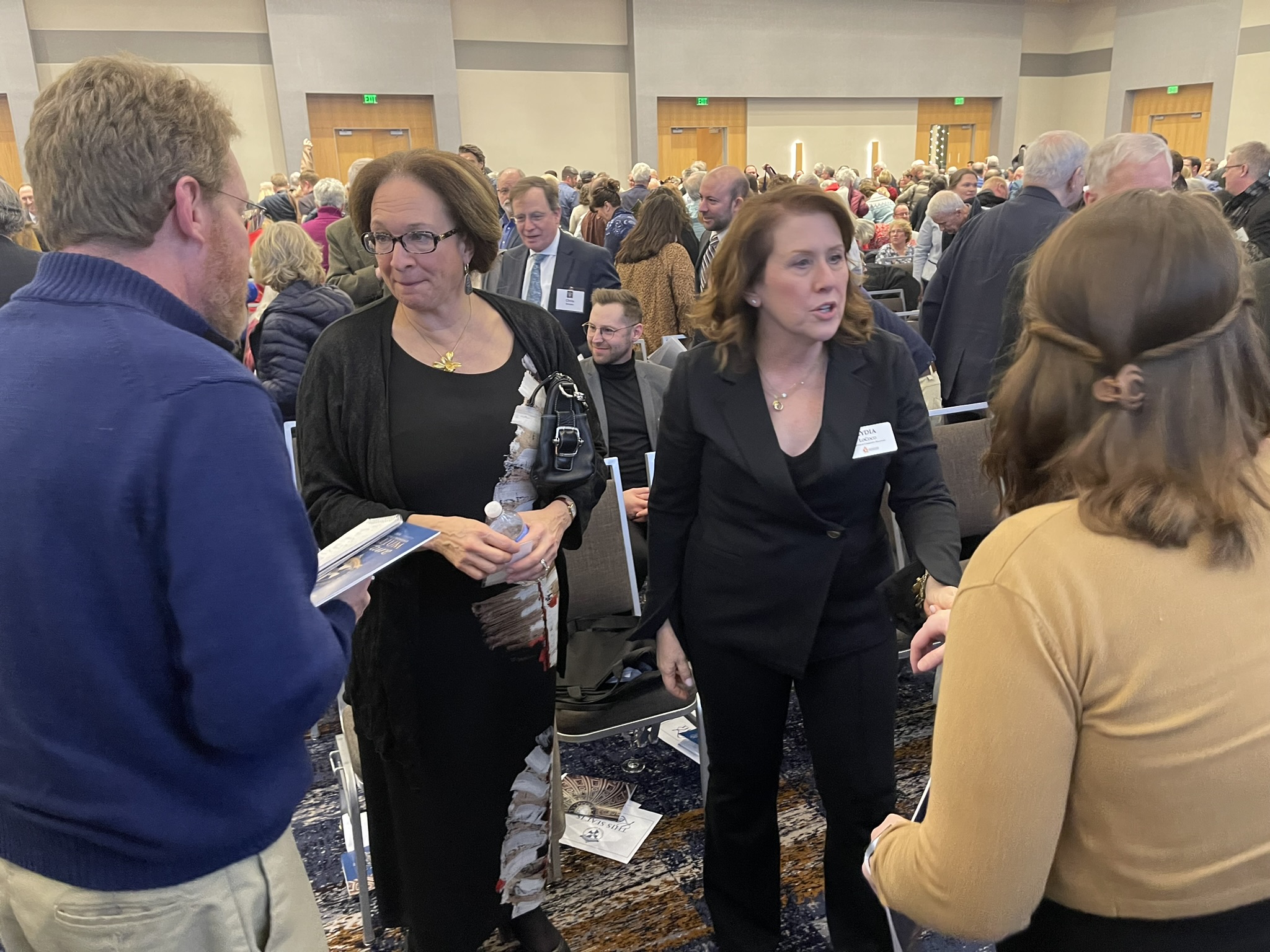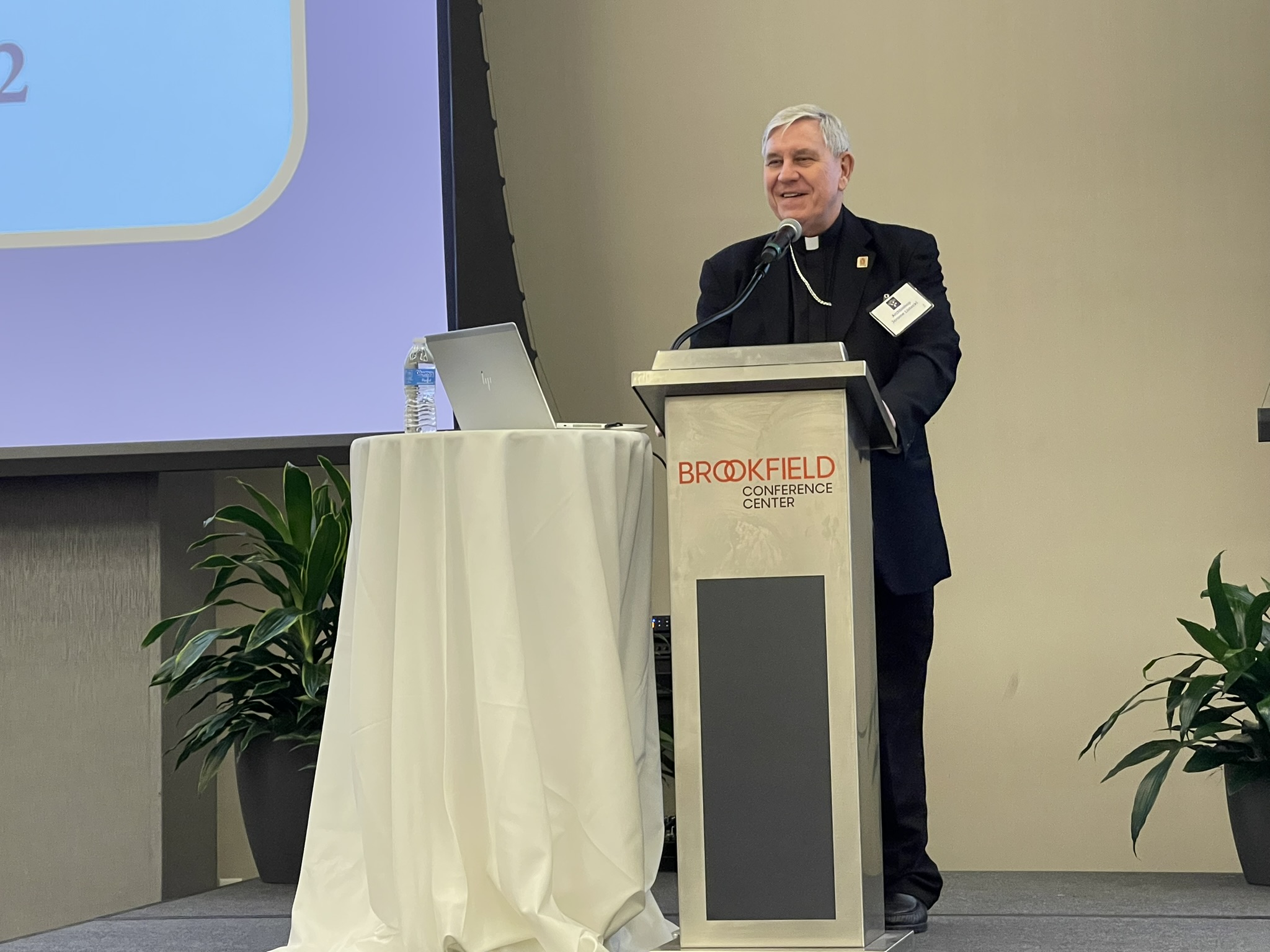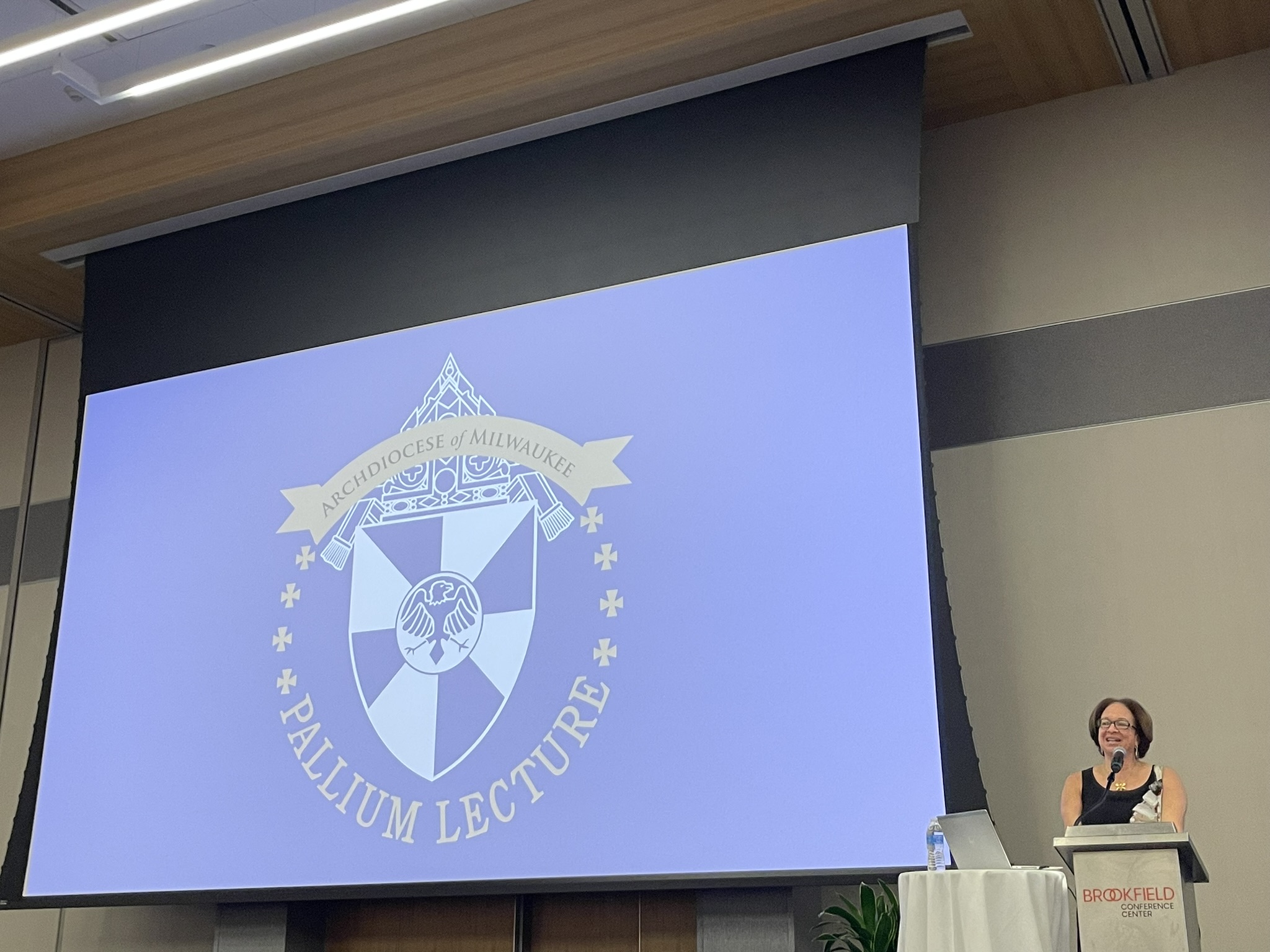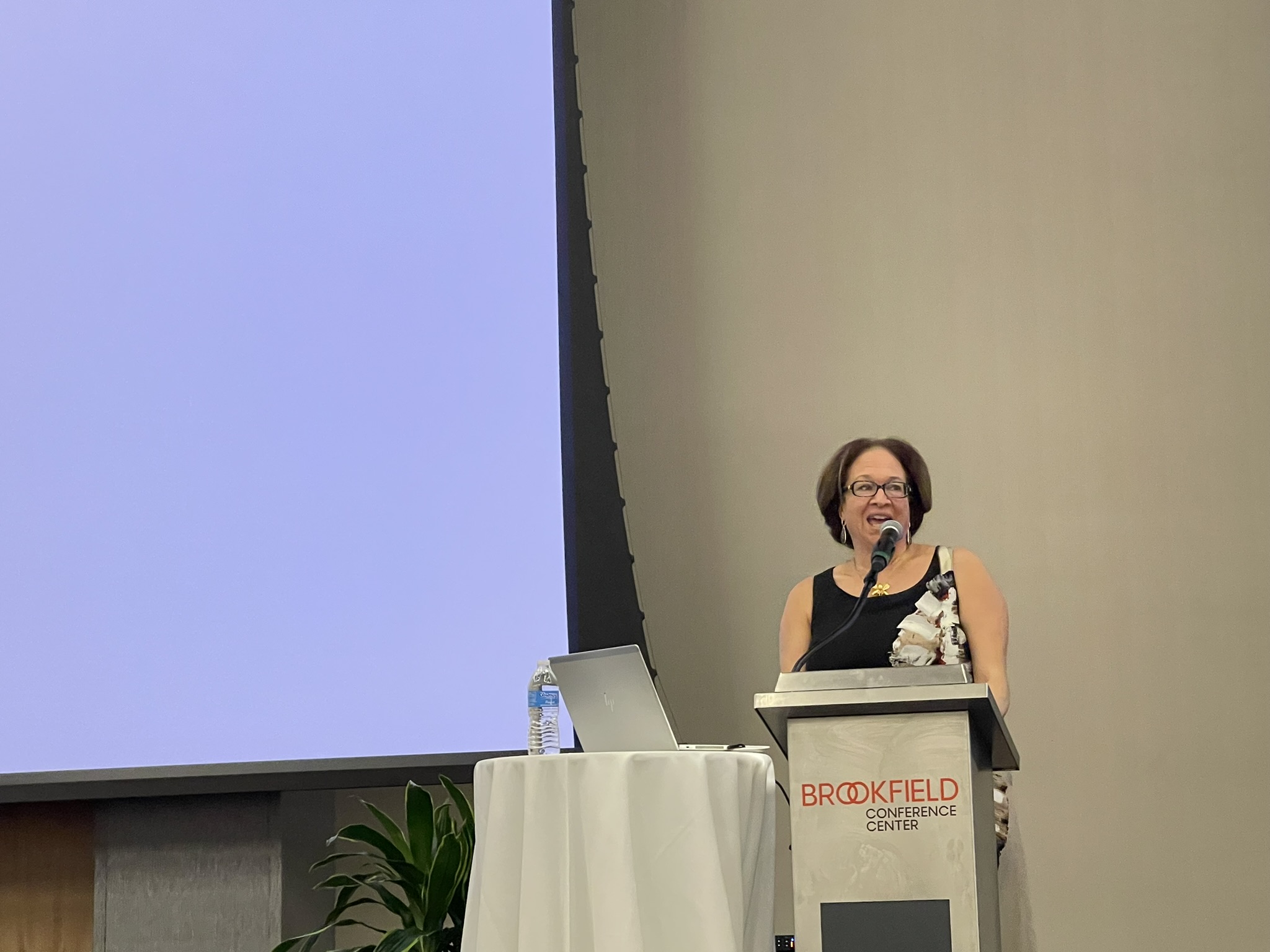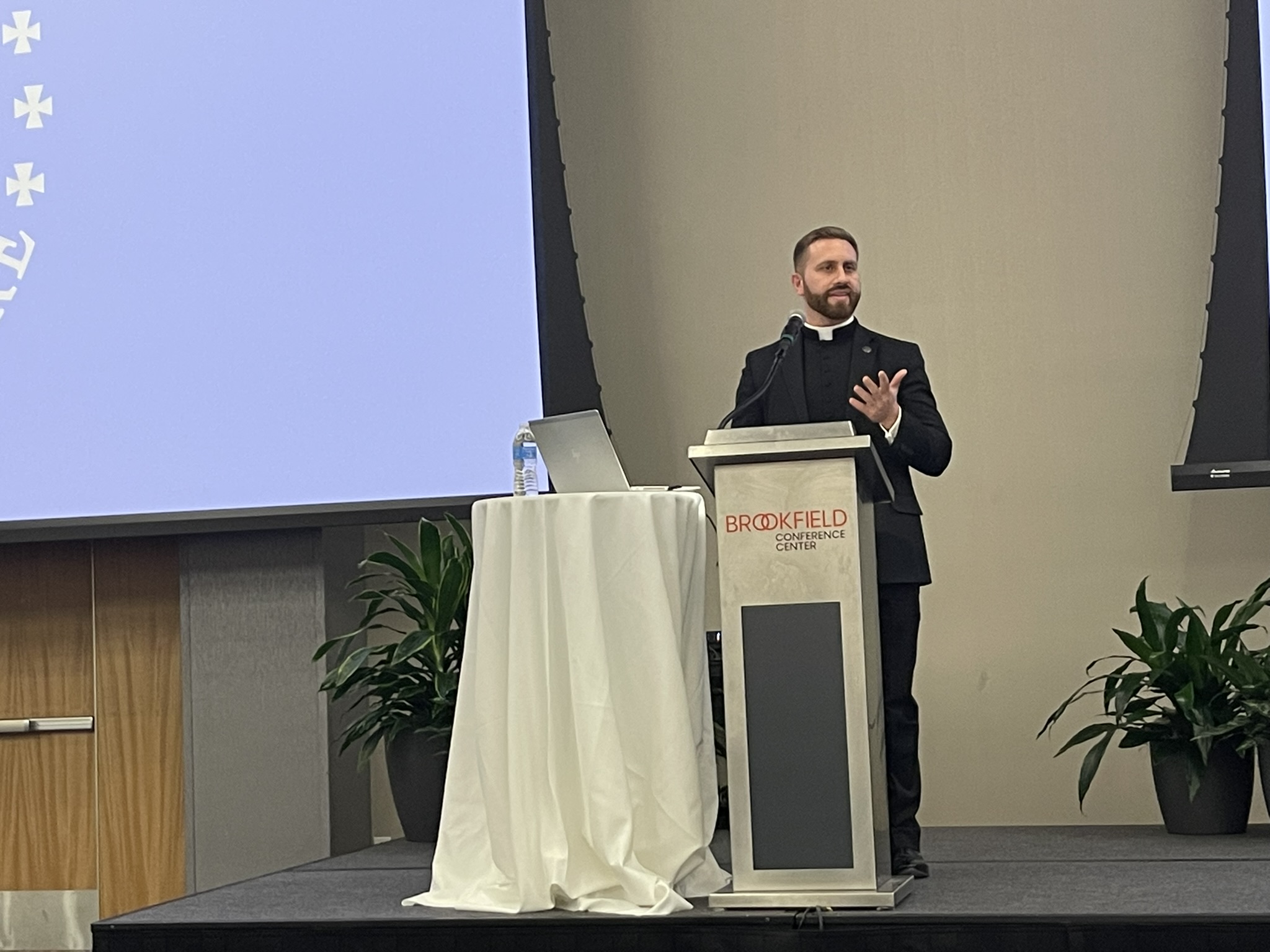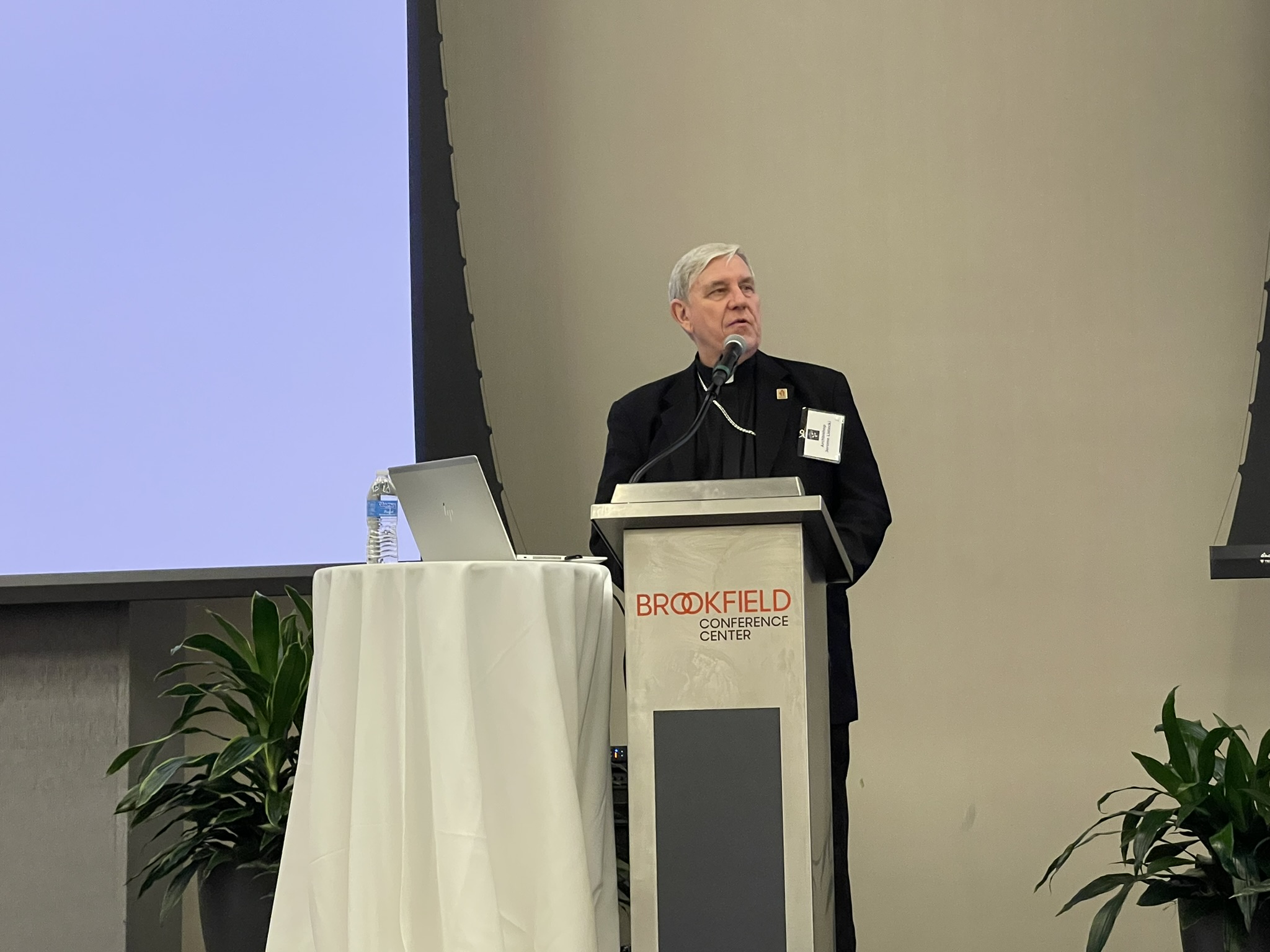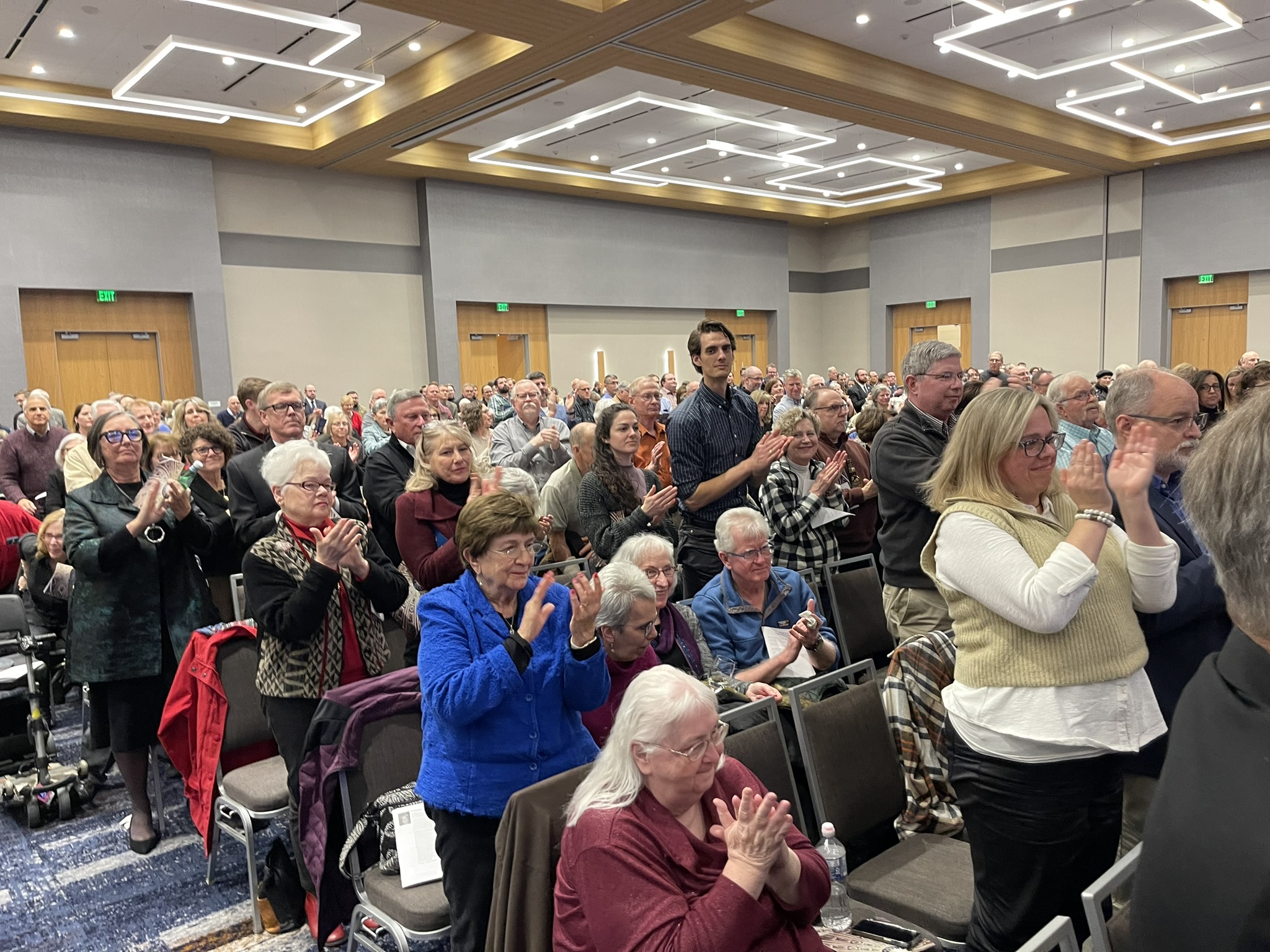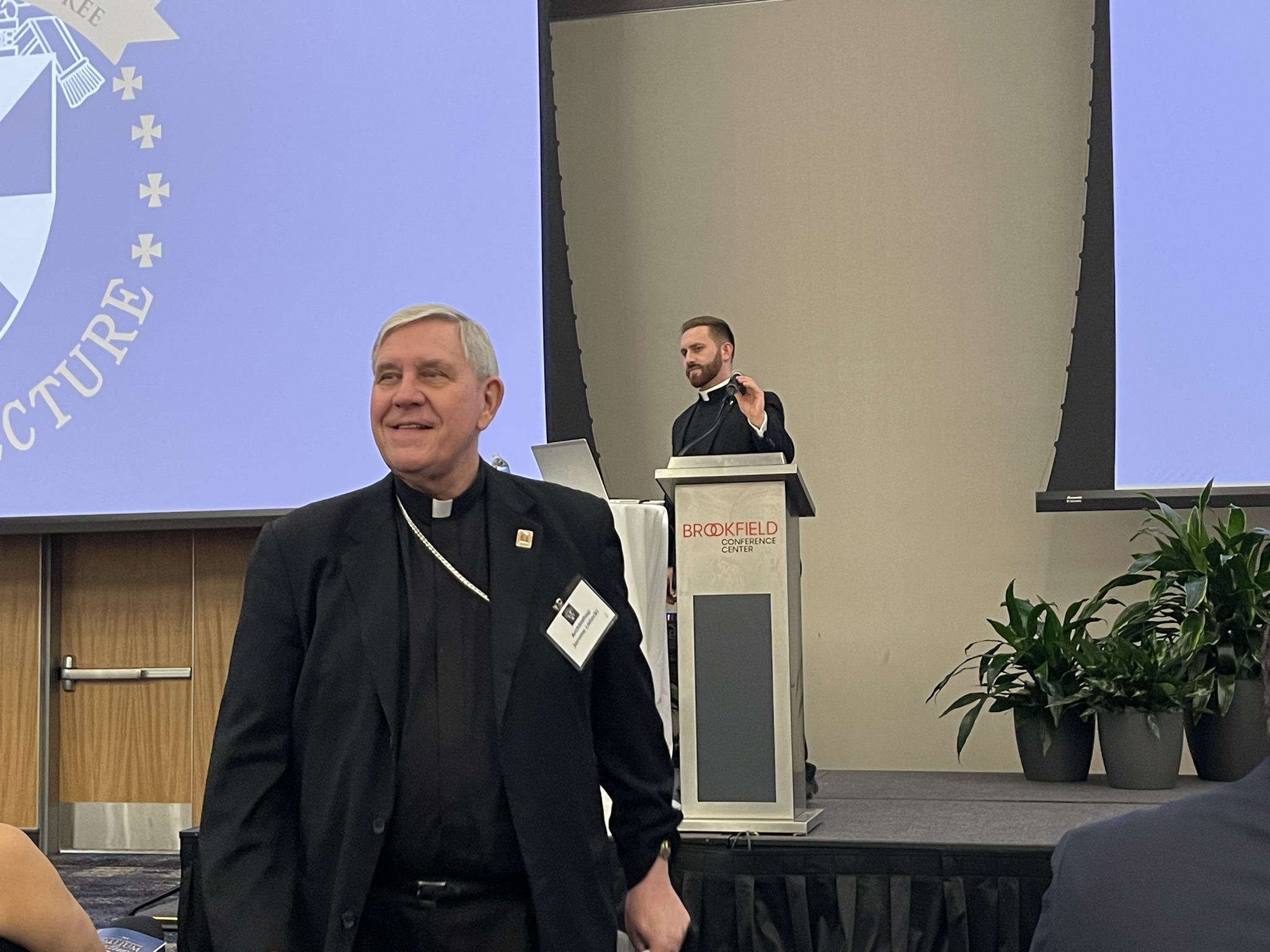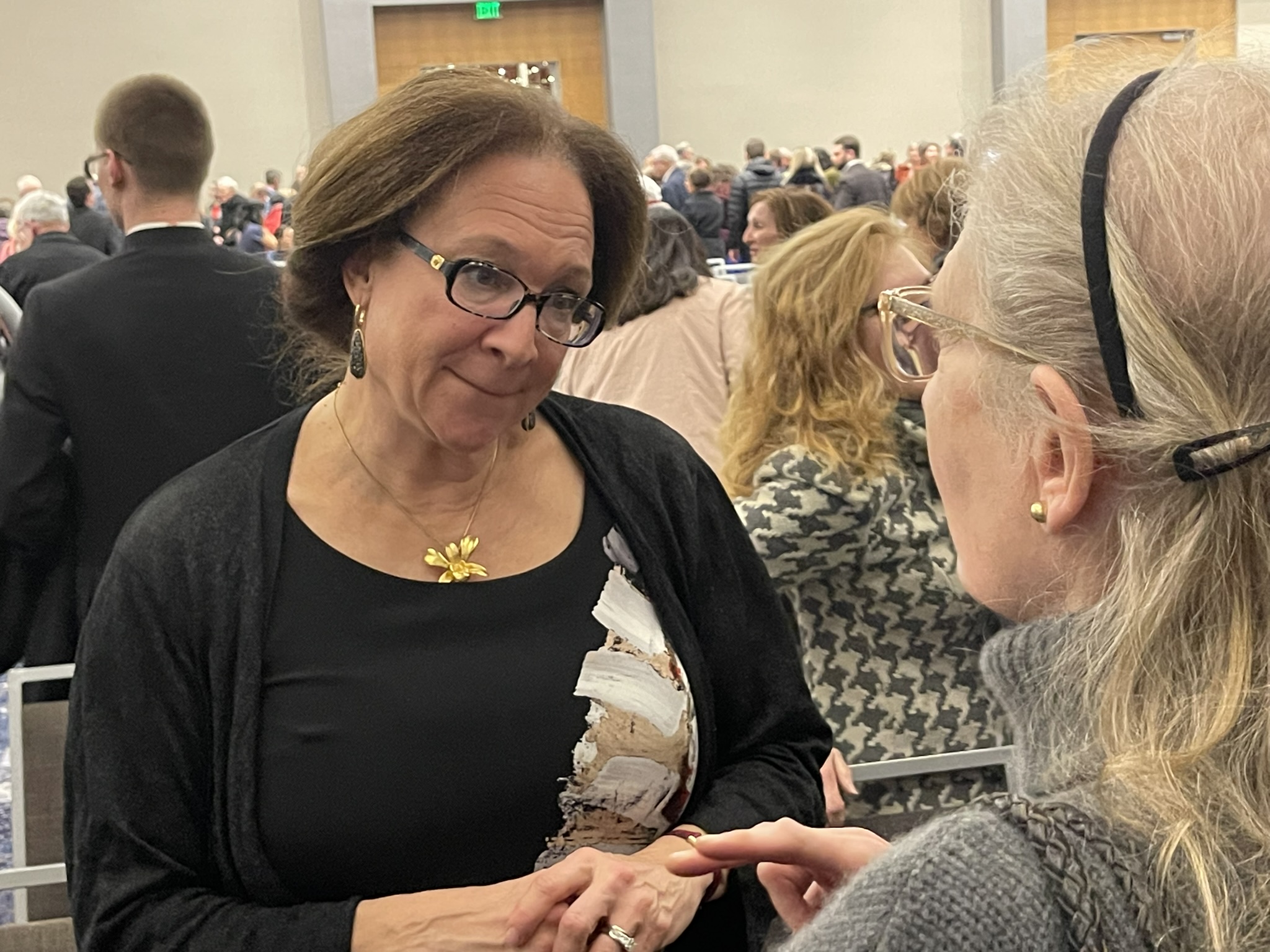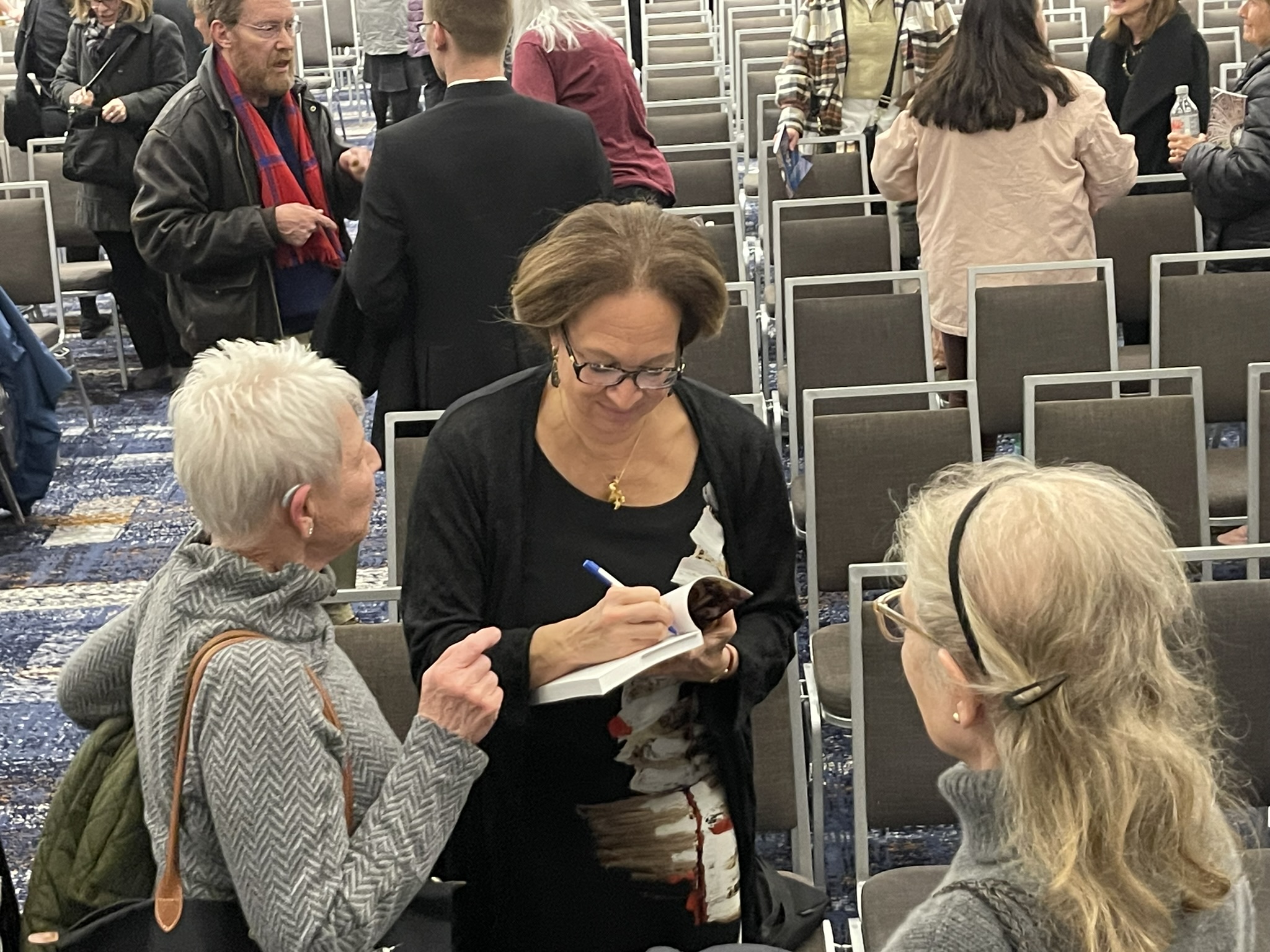
Dr. Elizabeth Lev (right) speaks with attendees following her discussion on Catholic art and beauty at the annual Pallium Lecture. Almost 1,700 people attended the event Thursday, Feb. 15, at the Brookfield Conference Center. (Photo by Larry Hanson)
In the 1500s, the Catholic Church found itself at a crossroads.
Following Martin Luther’s “95 Theses,” Henry VIII’s Act of Supremacy and John Calvin’s “Institutes of the Christian Religion,” the Church found itself splintered for the first time. This period coincided with the Renaissance.
Dr. Elizabeth Lev, a renowned art historian, discussed the art of that time and following the Council of Trent (1545-63) during the annual Pallium Lecture on Thursday, Feb. 15, at the Brookfield Conference Center. Using her well-curated collection of wit, charm, intellect and timing, Lev showed how art can point to greater truths when it comes to the sacraments and salvation.
“The annual Pallium Lecture is an important occasion because it helps us grow as a community, to cultivate Catholic culture,” Archbishop Jerome E. Listecki said. “Those of you familiar with the writings of St. John Paul II know that in the vastness of his writings, embedded in there was an emphasis on culture. When culture is askew, everything in terms of the proper direction of the sense of life, of the presence of God, is amiss. It is important that we foster a sense of culture so that we have a sense of rightness of the direction of the divine and its importance in our dealings with one another.”
Archbishop Listecki received a standing ovation from a record crowd of 1,700 people in attendance after reminiscing on his time in Milwaukee and noting he will submit his resignation letter to Pope Francis on his 75th birthday, March 12.
As the Church splintered in the early 1500s, Lev noted the Protestants really took advantage of the printing press, describing their material as being like sensationalistic “clickbait.” Gutenberg’s invention of the printing press enabled more than 150 million pieces of printed material to be distributed around Europe.
“Suddenly all this bile comes to the fore,” Lev explained. “In rapid succession, a series of things happened in the Church, which really fractures the Church. I’m thinking of a situation where the Church finds itself with its back to the wall.”
Going from one Church to having options meant the fights became more acrimonious.
“People could read these pamphlets and to be perfectly honest, the Protestants rock this medium,” Lev said. “They are really, really good at these clickbait types of pamphlets.”
She noted Catholics usually couldn’t respond in sound bites, but that the explanations are rather long and nuanced.
“The Catholic Church finds itself at something of a disadvantage,” Lev said. “We have this splintered faith, we have these different voices, and on top of all that, we have these new means of communication that are capable of transmitting very catchy, very memorable and often very disrespectful and kind of funny images that are this satire that is being sent out into the world.”
Following the Council of Trent, where Lev noted that art was discussed in the last session of the nearly 20-year period, the Church experienced a stretch that produced some of the most meaningful and lasting images in history.
Some of those she discussed were Juan de Juanes’ “Last Supper” (1850), which does what da Vinci’s 1498 work of the same does not — it shows the Eucharist; Caravaggio’s Entombment (1604), which breaks most of the rules of art until one realizes it’s an altar piece, making everything come into clearer focus; and Michelangelo’s “Last Judgment,” which showed many saints as powerful, saved warriors.
Disputing the notion this era was a period where the Church tried to destroy art and was hyper controlling, she said it is much more nuanced than that.
“You know what happens in that period?” Lev said. “A career criminal like Caravaggio becomes a superstar, and women painters become professional. It is under this period in the pope’s territory that we find women professional painters come to the fore.”
“It was said that Dr. Lev makes the arts speak,” Archbishop Listecki said. “She gives word to what we see visually, and it gives us a depth and understanding.”
The next Pallium Lecture will be Sept. 4, 2025, when Bishop Daniel Flores of the Diocese of Brownsville, Texas, will be the featured speaker.

